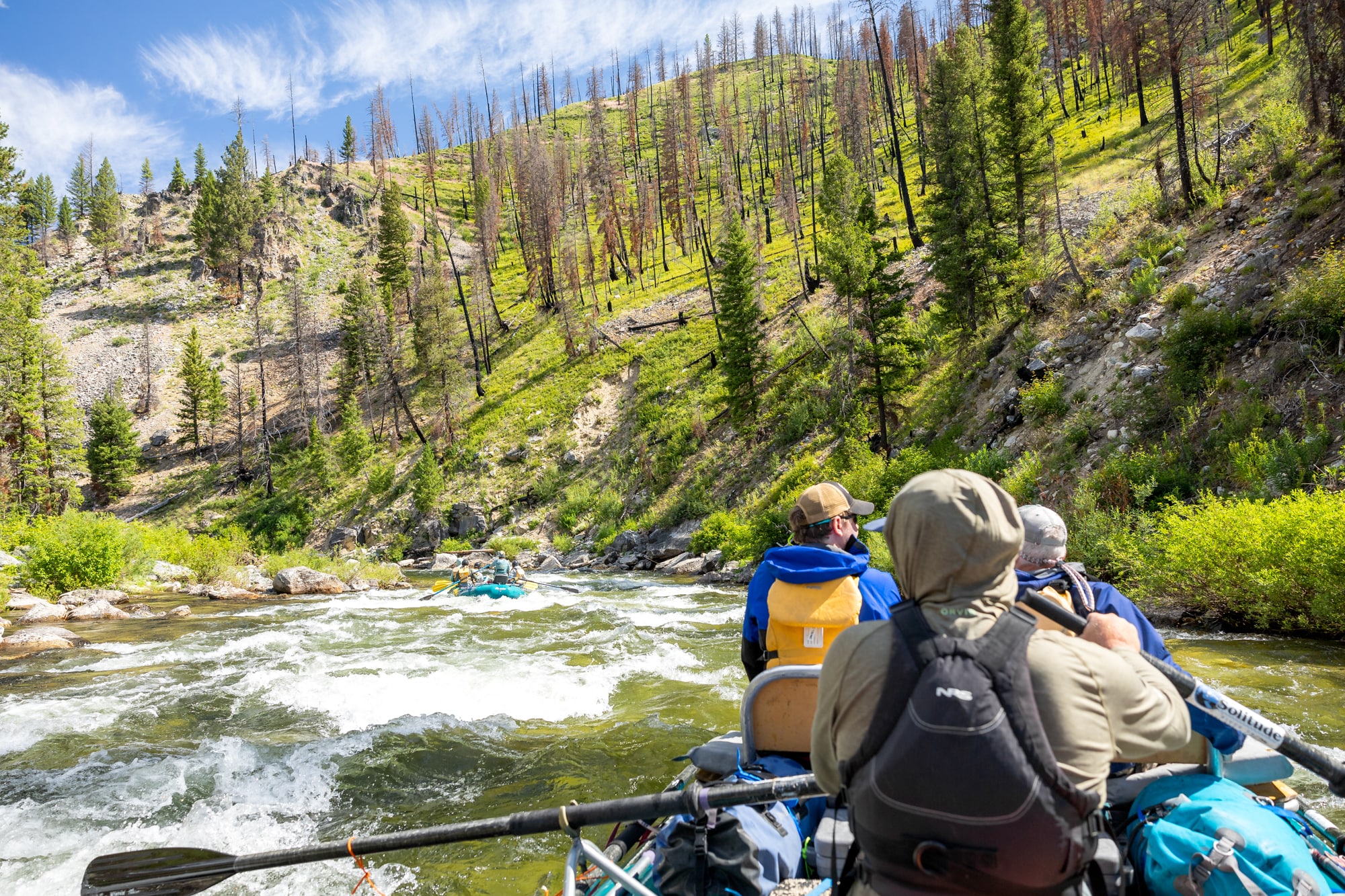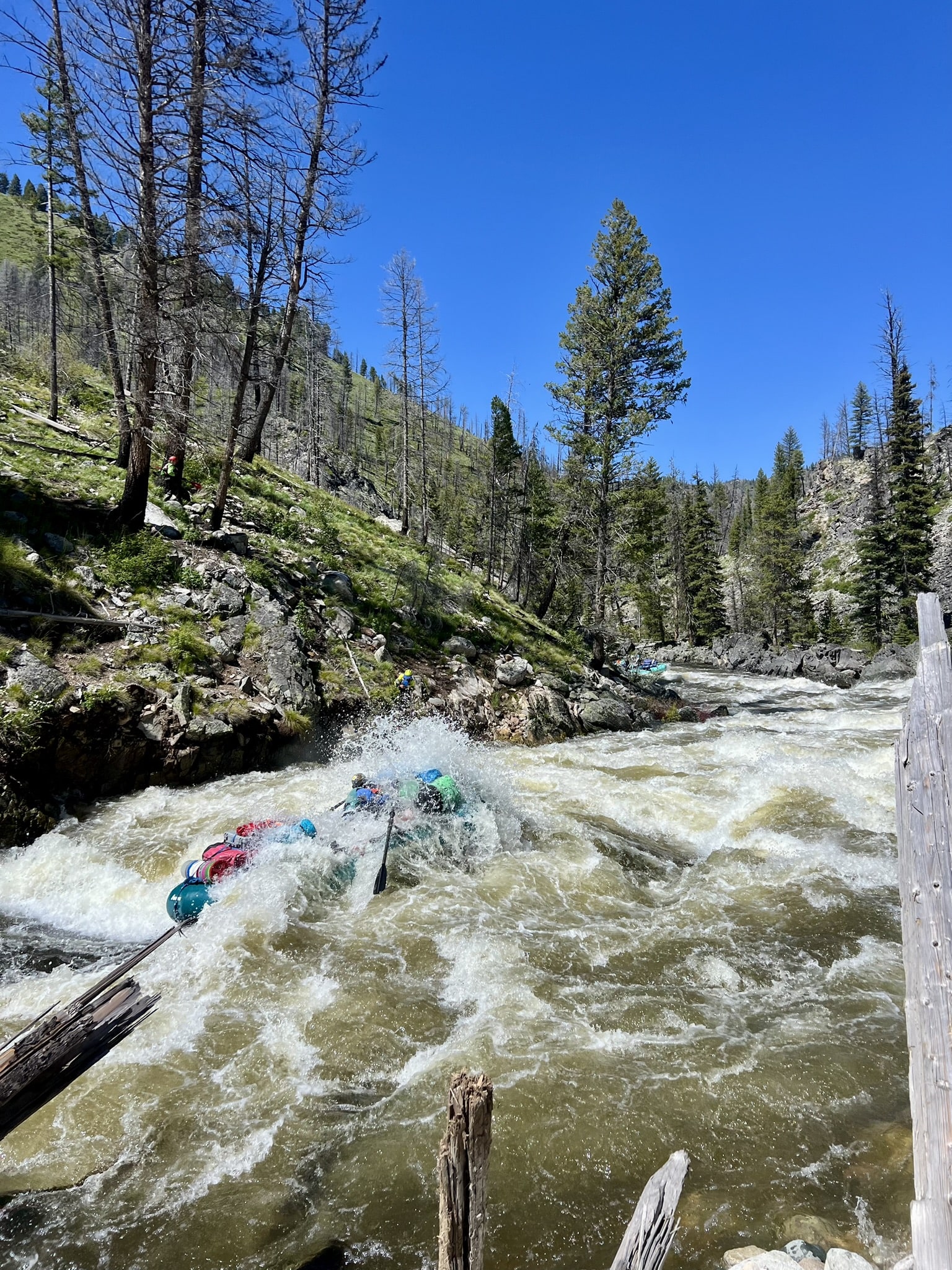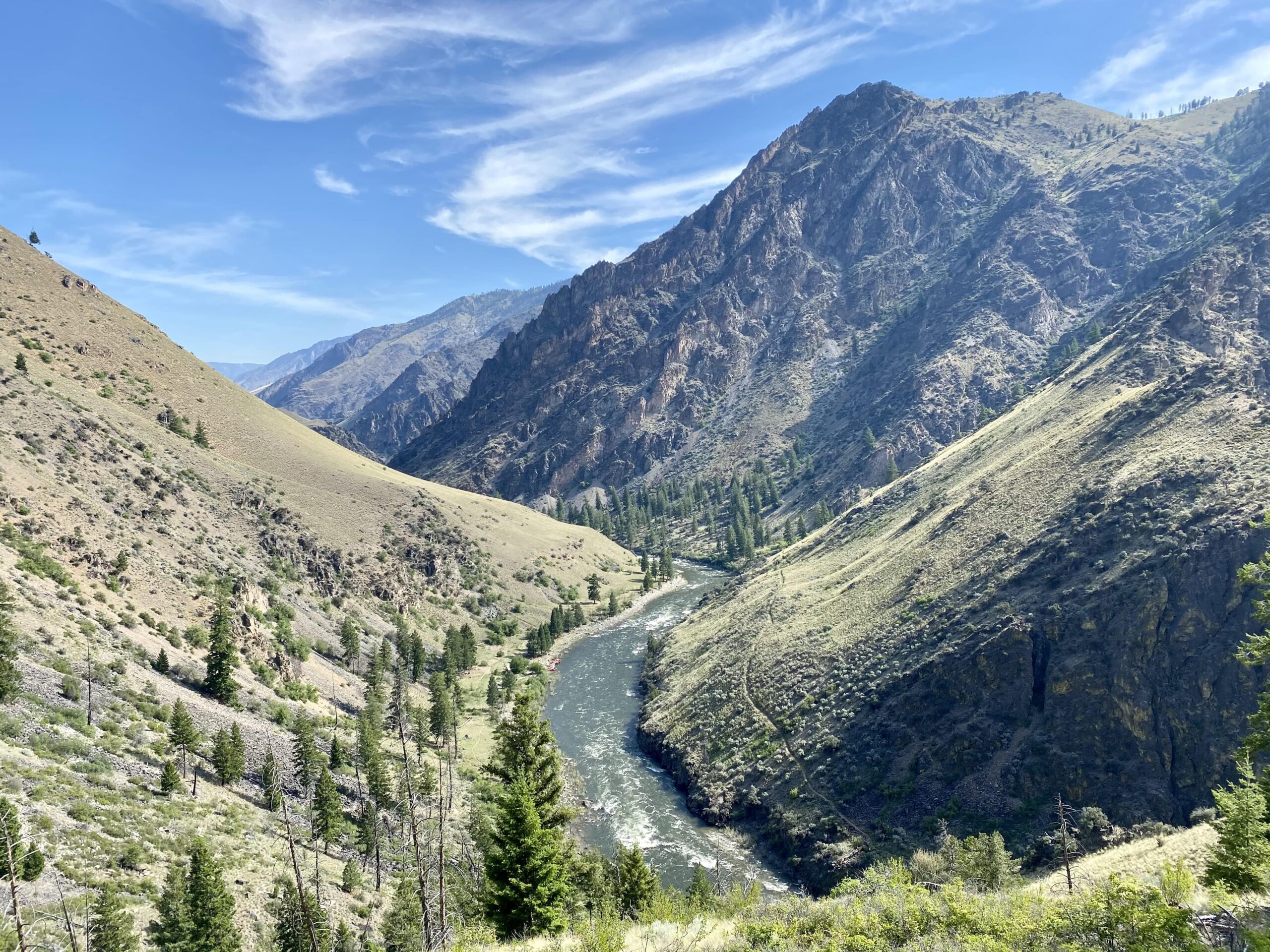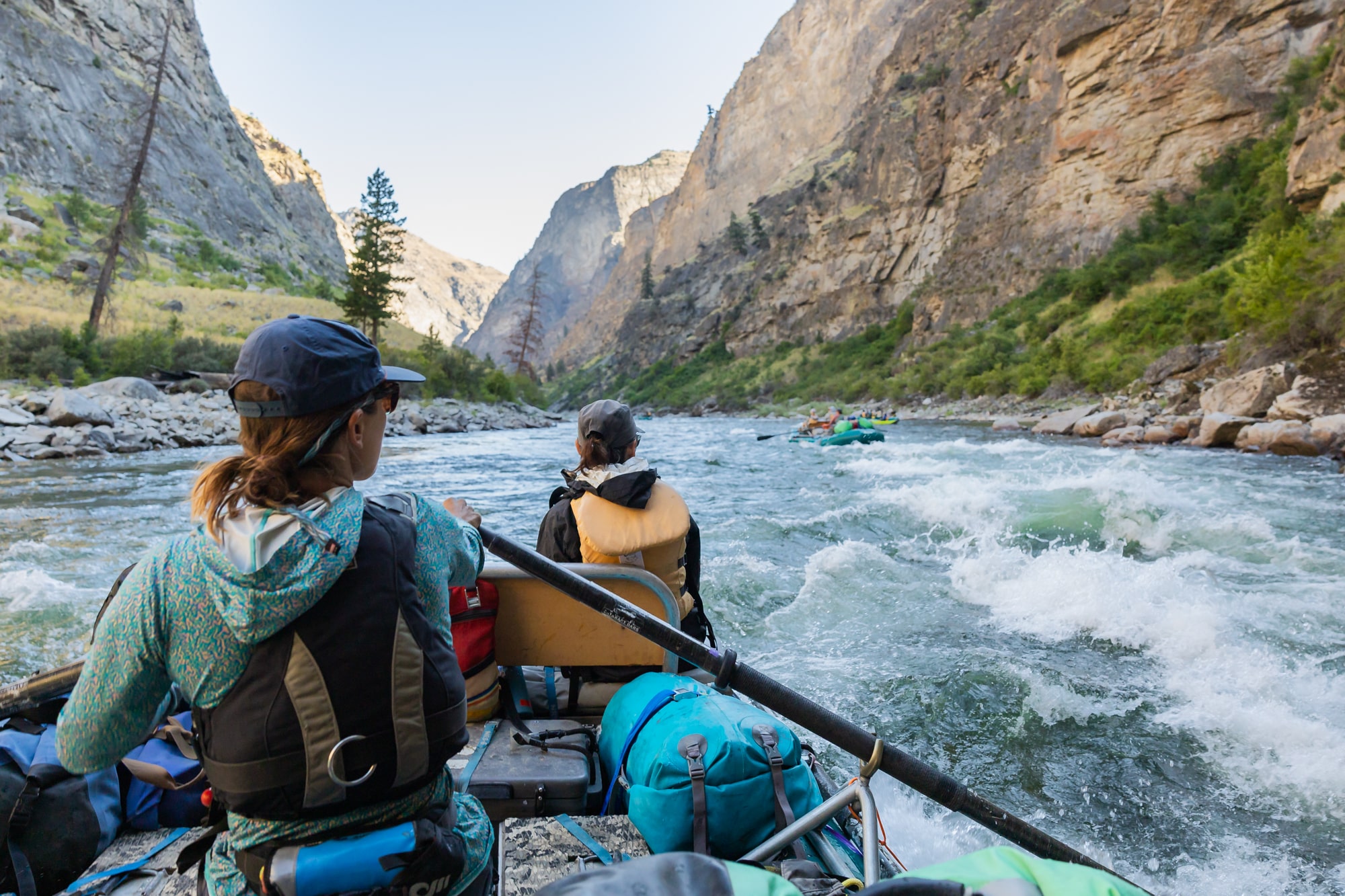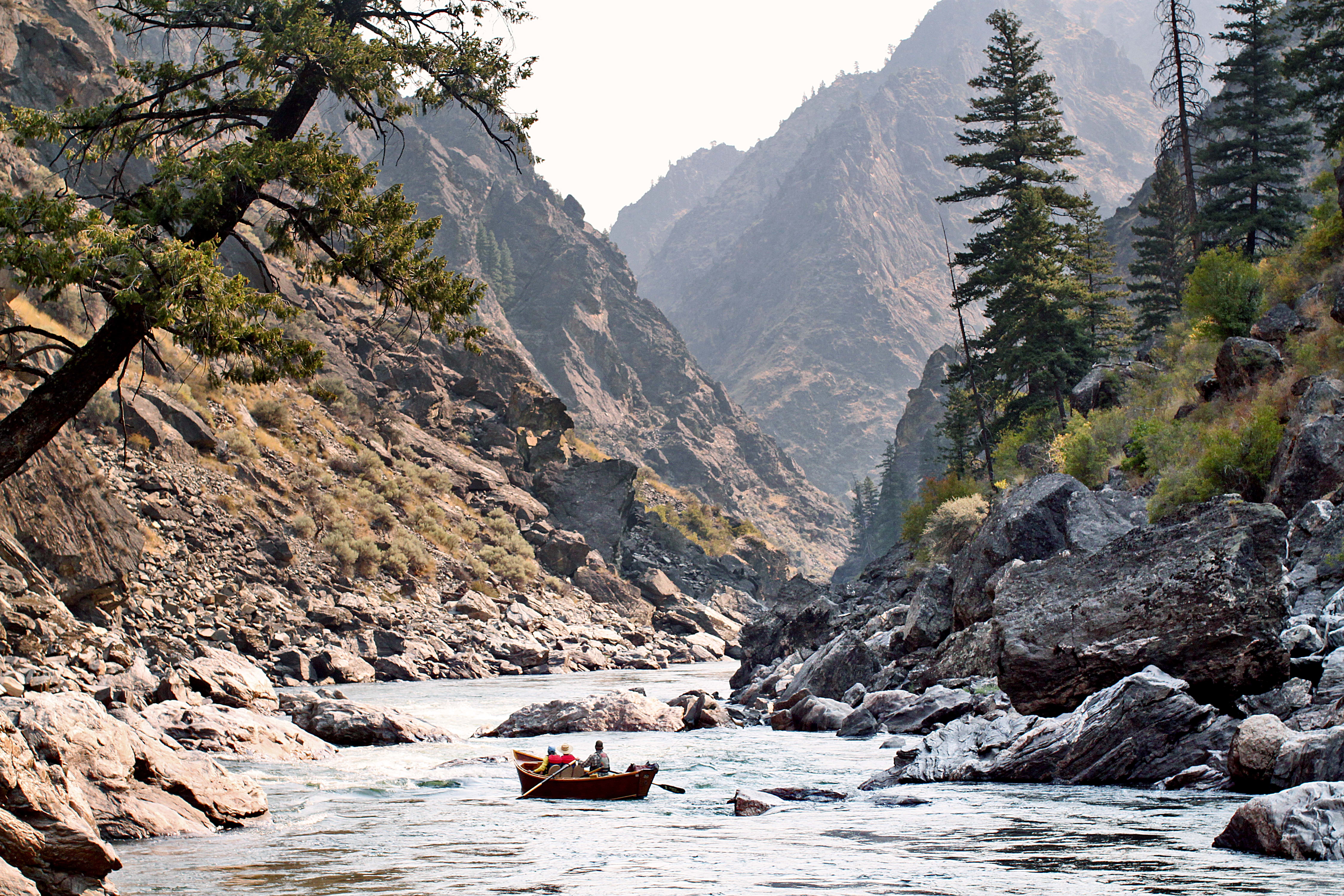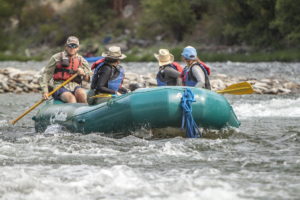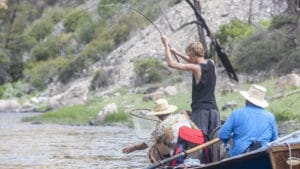Choosing favorite rapids on the Middle Fork of the Salmon River is a tricky and subjective endeavor for several reasons.
Number of Rapids
One being the sheer number of rapids to choose from along the 100 mile stretch of world-class whitewater. River runners rafting the Middle Fork will encounter well over 100 rapids between Boundary Creek and the confluence with the Main Salmon.
Another reason picking favorites is difficult is because of the changing character of the river along its journey. The Middle Fork falls a shockingly steep 40 feet a mile for the first 35 miles, mellows out miles 35-70 as the gradient lessens, and ends in Impassable Canyon, where the flows are at their most powerful, sheer canyon walls constrict the river, and the rapids become large and thrilling all the way to the confluence with the main stem of the Salmon.
A Free-Flowing River
The Middle Fork Salmon is one of the last remaining undammed stretch of river in the lower 48 states. Its status as a free-flowing river makes it completely uncontrollable and almost unpredictable. The flows typically peak in the spring as snow melts quickly from the mountains in the surrounding region. High water on the Middle Fork transforms the top section into a nonstop roller coaster of big whitewater with little room for error.
As the snow melt subsides and the water levels drop through the middle of summer, the river offers more technical and slower-paced whitewater, but still keeps boaters on the edge of their seats. Because of the constantly changing river flows, routes through rapids are also constantly changing, making no two trips the same.
Extreme Circumstances
Finally, due to other uncontrollable external influences such as wild fires and drought followed by extreme weather events, the rapids on the Middle Fork are subject to drastic alterations throughout their lifetime. Recently, side creeks along the top 10 miles of the Middle Fork have “blown-out,” meaning rainstorms caused fire-eroded creek beds to dump hundreds of tons of dirt, rocks, and trees into the river.
Well-known and infamous rapids on the Middle Fork Salmon that boaters have revered for decades, such as Hells Half Mile, Sulphur Slide, and Velvet Falls, have been completely transformed. It is unlikely that anyone will ever take on the river-wide recirculating hole at Velvet Falls again, as the feature has been buried under 20 feet of rocks and boulders.
The fact that the river is an ever-evolving creature of its own makes choosing a favorite rapid seem almost futile, as it is almost guaranteed that whatever rapids I choose will eventually become unrecognizable.
Nonetheless, here is my list of favorite rapids on the Middle Fork Salmon River, as they existed in the summer of 2024. This list is in order by river mile, from start to finish.
1.) First Bend Rapid — Mile 0, Class III
I love this rapid because it really sets the tone of what to expect on your journey rafting the Middle Fork of the Salmon. It’s the rapid you see from put-in that introduces you to the mighty river and the rapid that you can’t keep your eyes off of as you load your boats and prep guests on the first day of our 6-day adventure.
First Bend is also just as it sounds — a large right-hand curve in the river. From the shore, you can’t see where the rapid goes and what happens after the initial drop, and that sense of mystery really draws you in to the excitement of rafting the Middle Fork.
First Bend is your introduction to the Middle Fork and your first challenge, and you encounter it right as you push off the beach!
2.) Velvet Falls — Mile 5, Class IV
Velvet Falls will never lose its infamous reputation, no matter how many changes it undergoes. Velvet Creek comes cascading into the river from the right side, spilling debris into the channel in a steep section at the corner of a left hand bend.
Once known for its river-wide hole and difficult sneak move behind a pyramid rock on the left shore, this rapid has haunted the minds of Middle Fork boaters for years. Now, that huge pyramid rock is a strongpoint on the right hand shore, as the entire river filled in with rocks, debris, and trees, and carved itself a new channel to the left of the rock.
I love this rapid because of its transformation. I have rafted through 3 or 4 iterations of this rapid after major changes, and at different flows. It’s an amazing feeling to be constantly adapting alongside a free-flowing river.
3.) Powerhouse — Mile 11.5, Class III-IV
Upper, middle, and lower Powerhouse is a long and thrilling rapid on the Middle Fork Salmon that begins after floating through a few miles of calmer water. I love this rapid because of its length and the amount of time that you need to stay focused and make important moves. It maintains the high-speed pace of the top 25 miles of river, and keeps rafters on their toes.
It’s three distinct sections are all challenging in their own ways. The first section navigates though a rock garden before flowing over some larger waves. Next, the river turns right and you enter Middle Powerhouse, where you will work your way through more large boulders before a sharp left turn along a cliffside.
There is a beautiful pool at the bottom of the middle section at most flows, providing a sudden respite in the busy whitewater. Lower Powerhouse has the rafter zig-zagging down the river, avoiding rocks and finding the cleanest channel. The moves that rafters make in this rapid are exhilarating.
4.) Ski Jump — Mile 33, Class II-IV
A classification that ranges from class II to class IV is a pretty major leap for a very short and random rapid, which is one of the reasons I appreciate Ski Jump rapid. It demonstrates just how much a rapid can change depending on the flow of the river.
This rapid occurs in a straight stretch of canyon where cliff walls rise suddenly for a brief section, with one large boulder sitting in the middle of the current. This rock is as large as a car and shaped like a ski jump!
At high water, the river flows over this rock, and forms a huge recirculating hydraulic that conjoins with a massive wave coming off the left wall. When the water gets lower, this rapid becomes tamer, exposing the ski jump rock and narrowing the two channels. Rafts will flow between the ski jump rock and the left wall over a smooth drop. The walls and rocks surrounding are beautifully carved and impressive.
5.) Underwater Canyon — Mile 51, Class II
This next rapid on the Middle Fork is not necessarily renowned for its whitewater, but for what is visible below. Underwater canyon is exactly how it sounds — a section where the river flows over a deep trench, its canyon walls clearly visible just below the surface. Such a phenomenon is usually only visible when the water is lower during our later season trips.
It is a unique and intriguing place, and gives river runners the sense of flying as they glide over the seemingly bottomless depths. The underwater canyon ends in a deep pool that gradually shallows into a calm section of river, where every rock is visible in extreme clarity. Fish are drawn to the expansive underwater structure making this an ideal place to spend some time casting.
6.) Haystack and Bernard — Mile 67.8, Class III
This series of rapids offers some of the most technical but enjoyable maneuvers on the Middle Fork, offering river runners thrilling rafting and exceptional views. The rocks that clog the river here are massive — the namesake rock stands much taller than your average haystack, and is surrounded by similarly smooth pale boulders.
I always feel excited to navigate this series of rapids, and gain satisfaction at the end of every run. High water through Haystack and Bernard offers huge wave trains and an exciting route through large hydraulics at the bottom. Lower water leads to tighter and more challenging moves, but leaves time to admire the monolithic boulders as you pass by.
7.) Jack Creek Canyon — Mile 70.5 to 72.5, Class II-III
Not technically one rapid in particular, this selection encompasses an exciting and beautiful stretch of whitewater that feels nonstop from start to finish. The river enters Jack Creek Canyon shortly after passing through the calm stretch above Haystack and Bernard rapids. You leave the last wide open space on the Middle Fork and tuck into a steep and jagged canyon where the whitewater immediately picks up, indicating the thrilling rapids still to come downstream.
Earthquake Rock rapid (class III) is the most well known rapid in this sequence, and has the boater zig-zagging around a huge boulder in the middle of the river, placed there after the Mt Borah earthquake in 1983. Following this more technical rapid is a series of splashy wave trains that flow for the next quarter mile.
There are several large pools in this stretch to relax and take in the spectacular scenery, quickly followed by more straightforward yet extremely enjoyable whitewater at any water level.
8.) Wall Creek — Mile 80.8, Class II+
After leaving the majesty of Veil Falls upstream, it is hard to imagine any superior jaw-dropping views on the Middle Fork. But just ahead is Wall Creek rapid, who’s curving direction sends boaters into the depths of the Impassable Canyon and one of the most iconic sights on the river.
A large pool above a right-hand turn indicates the entrance to Wall Creek, and if you have the chance to glance left as you drop down the smooth tongue of the rapid, you can look up the narrow slot canyon that gives this rapid its name.
I love this rapid for its enjoyable waves and the view it ends with. At higher water levels, this rapid is the start of one long and incredibly fun wave train that leads all the way to Redside rapid a mile and a half downstream.
9.) Redside — Mile 82.5, Class III-IV
Redside rapid is another of the more well-known and respected rapids on the Middle Fork Salmon River. It begins at the end of a long straightaway surrounded by thousand-foot-high granite cliffs. The rapid itself is clogged with huge boulders, with names such as Kaiser’s Helmet, Airplane Rock, and Sevy’s.
I love this rapid because of its thrill at higher water, and the beauty of the sculpted rocks at lower flows. The named boulders in Redside are covered in raging whitewater in the spring, forming massive waves and hydraulics. The powerful force of the river has carved those rocks into smoothly shaped monoliths that are easily admired at lower flows as your raft floats right between them, making for an exhilarating and satisfying ride.
10.) Upper and Lower Cliffside — 88.6, Class III
These rapids are back to back, with just one large pool between them. I enjoy these rapids because of how opposite they are in nature. At high flows, the upper rapid is completely washed out, all of its waves hidden under the currents. But the lower rapid becomes a huge and intimidating monster, coursing around a tight left bend and forcing the boater to hug the left wall. The entire middle portion of Lower Cliffside rapid is littered with enormous boulders tossed in to the river from Tumble Creek on river right.
At lower flows, punchy and powerful waves form in Upper Cliffside rapid, offering some of the most thrilling rafting on the Middle Fork. Boats careen along the towering left wall and smash through some of the biggest waves on the river. Lower Cliffside mellows out at low flows. Boaters still hug the left wall to avoid the rocks in the center, and to better admire the smoothly polished granite wall that has been burnished to a sheen by thousands of years of river wear.
11.) Hancock — Mile 92.2, Class III
Hancock rapid is well-loved because of it’s status as one of the longest continuous rapids on the Middle Fork. This rollercoaster of a rapid starts with a fun wave train, turns into a rocky garden, and then ends with a rollicking and chaotic ride through the large tail waves.
This rapid is exciting at all water levels, and guarantees a good ride for all involved. At lower flows, one of my favorite rocks on the river begins to emerge. Towards the end of the rock garden is a large boulder that has its center carved out by millennia of whitewater. It looks like a sculpture! And within the carved out center of this boulder are several smaller rocks, which must have been placed there by the powers of the river.
12.) House of Rocks — Mile 94, Class III
There are several other notable rapids at the end of Impassable Canyon, but House of Rocks is extraordinary to me because of the sheer size of the boulders in the river channel and the technicality of the maneuvers involved.
As you approach House of Rocks for the first time, it seems as if there is no feasible way through. Massive car- and bus-sized boulders clog the river, and give the illusion of impassability. But a zig-zagging move down the left channel or the center will get you through with style and finesse.
Some of you may be thinking that this list is missing some very important rapids, such as Pistol Creek, the Tappans, or Rubber rapid. As I mentioned at the start, this evaluation is completely subjective. I have to really enjoy the rapid all season, from high water to low water, for it to be considered a favorite.


